
HeroRise Masculine Archetype Deck
During the pandemic, I created an interactive experience to help men find confidence and purpose. It’s been a passion project that I utilized a user center approach during the whole design process.
Having an art project kept me sane and gave me a chance to deepen my skillset with UX.
My Role: All me, with the help of mentors.
- User Research
- Product Designer
- Branding
- User Testing
Objective: To create a passive-income product that can help men connect to positive masculinity. The product needed to balance the amount of effort needed to create it, social impact, and profitability.
Timeline: March 2020-January 2021
The Problem:
Men are struggling in relationships and life-balance and need practical guidance.
The Background
For the past 15 years, I have been interested in psychology, human behavior, self-growth, and how that intersects with gender identity. While exploring this subject, I kept wanting interactive tools instead of just reading book after book. This lead me to create HeroRise and eventually make the Masculine Archetype Deck.
I built the brand, did user research, implemented the product design, and launched the product.
The User Challenge
Men struggle with depression, self-doubt, suicidal thoughts, frustration, and don’t know where to turn for help. Men that are new to understanding their masculinity are looking for guidance on where to begin and how to understand the different aspects of their identity. Men need practical steps they can take to improve their lives and connect to the positive aspects of masculinity.
Business Goal
To create a product that is a source of passive income that would help men understand themselves on a deeper level and empower and inspire the user to improve their life.
The Design Process
I set out to understand the challenges of getting a tattoo as a newbie & an experienced tattoo enthusiast in order to deliver a product that takes the pressure away, leaving users inspired and reassured they are getting their dream tattoo.
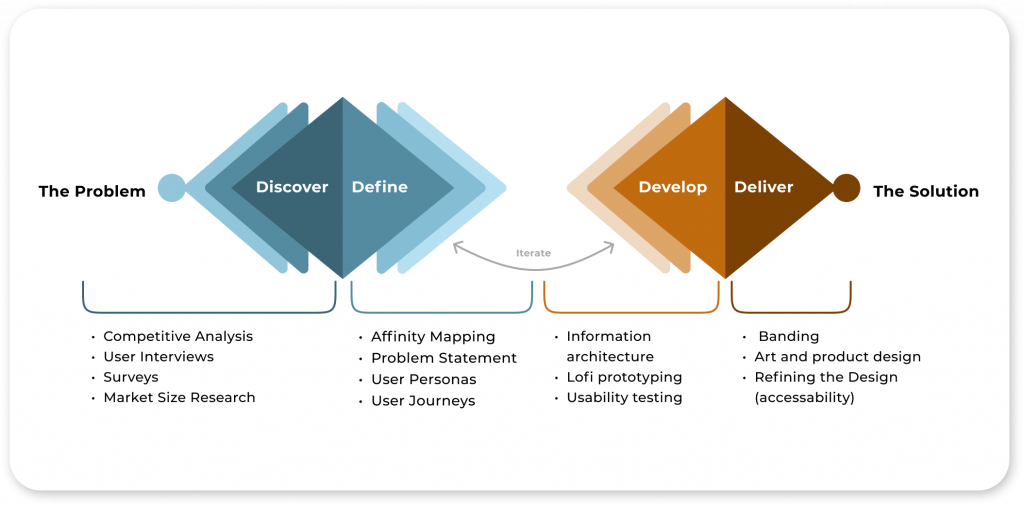
Discover
Evaluating market size and viability
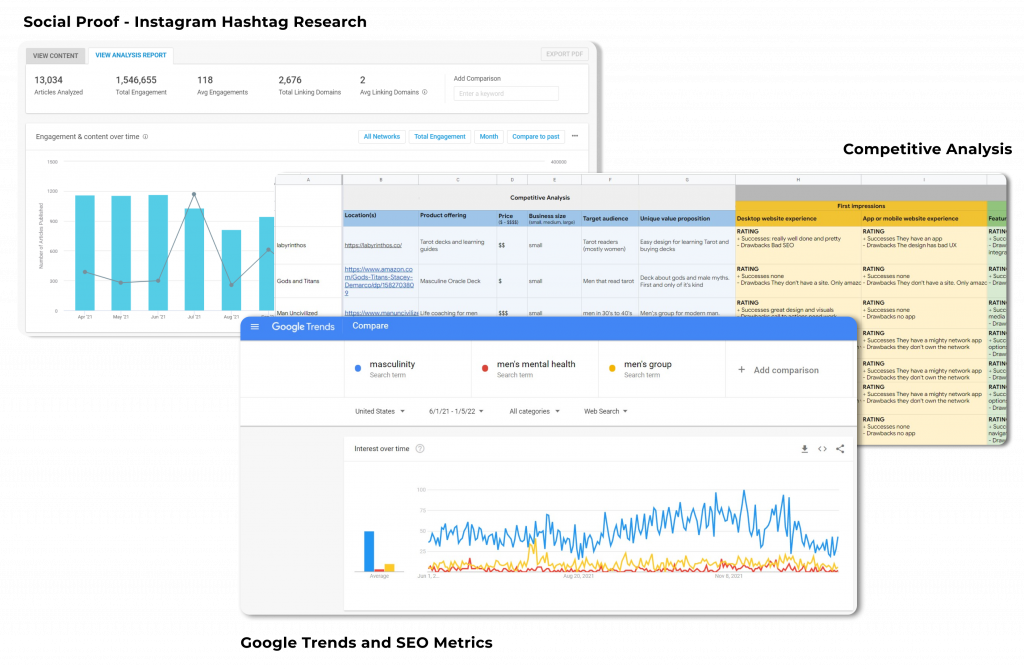
To understand the lay of the land, the project started with a Competitive Analysis. The main purpose was to use secondary research to evaluate the potential market size and opportunities.
I gathered Quantitative data from SEO traffic reports, Google trends, Instagram hashtags, and Amazon Seller metrics. Qualitative data was also gathered from posts on Social Media, Reddit, and Quora.
My background in SEO helped me understand the size of the market and the competitive landscape. The search term “Masculinity” had over 2 million 200,000 searches a month on google and about 1 million posts on Instagram.
The research showed an opportunity due to competition and market size
What do people need? Conducting User Interviews
To gain an understanding of the needs and behaviors of users, 8 unstructured and 23 semi-structured interviews to find similarities so I could begin to build personas.
After synthesizing the data from the interviews, into an empathy map and user journey, I was able to take out some key insights:
- I set out to understand the challenges of getting a tattoo as a newbie & an experienced tattoo enthusiast
- in order to deliver a product that takes the pressure away, leaving users inspired and reassured
- they are getting their dream tattoo.

Define
Analysing user data
Key Insights
• Users’ age distribution: 25 – 40
• The users are mostly artists (89% of the participants in the survey) in a wide range of fields.
• When looking for opportunities, the top three considerations are: financial support, location and duration.
Key Insights
• Users’ age distribution: 25 – 40
• The users are mostly artists (89% of the participants in the survey) in a wide range of fields.
• When looking for opportunities, the top three considerations are: financial support, location and duration.
Empathizing with...
Talking to people with tattoos gave me a good understanding of their needs & goals. I gathered useful insights and started to narrow down the scope of the project. I created 3 distinct user personas:

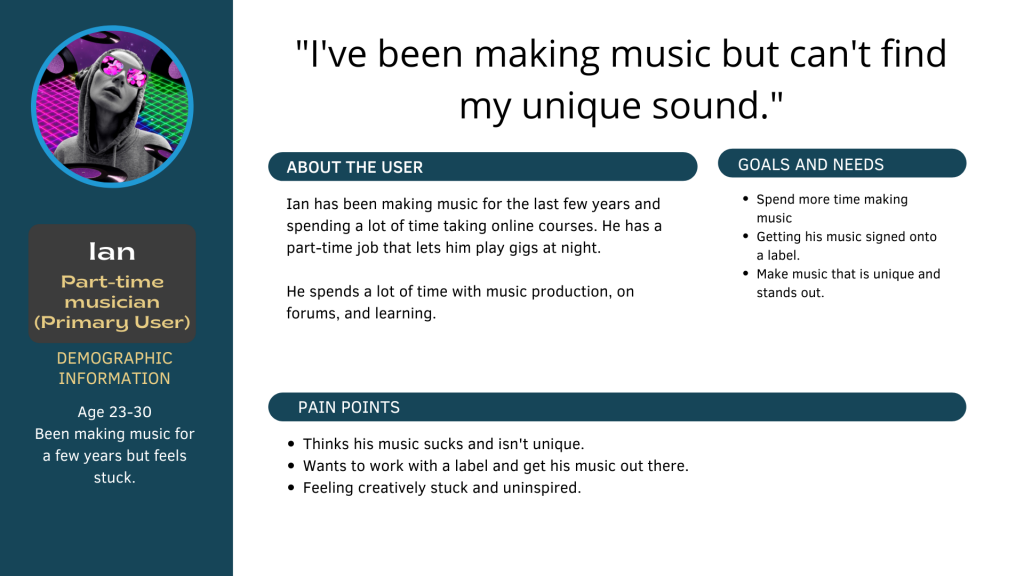
User Journeys:
What would Kay’s experience with Ink Tank be?
Informed by each persona’s experience, attitudes & goals, I have created User Journey Maps to outline the processes needed to achieve their individual goals within Ink Tank app. This allowed me to focus on possible critical pain points and plan how to address them in the following design decisions.
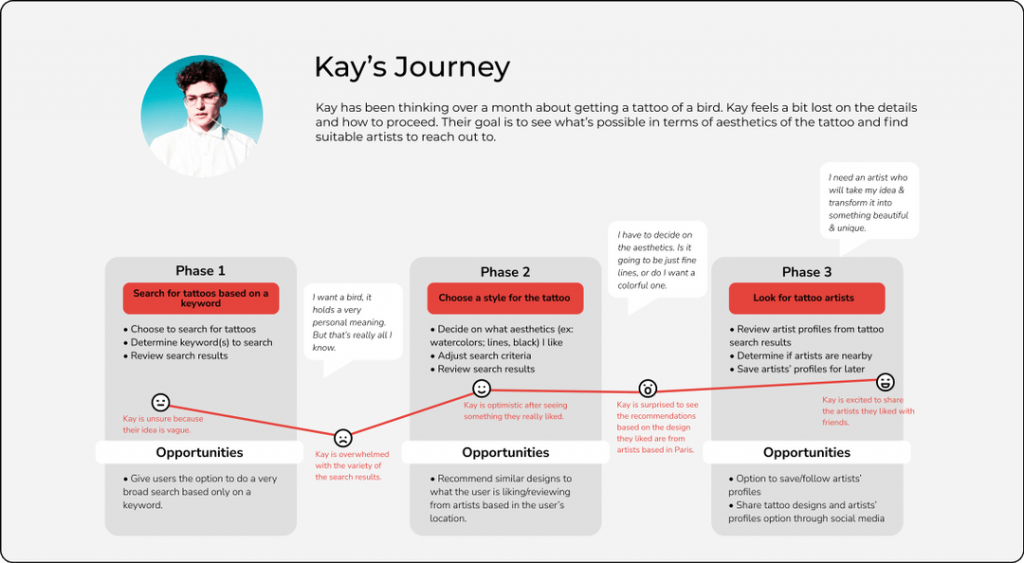
User Flows:
How would Kay go about finding an artist on Ink Tank?
I set out to map out their User flows. This step helped me keep the design user-centered, by showing me what pages or screens of the app will be needed from the perspective of my user personas.
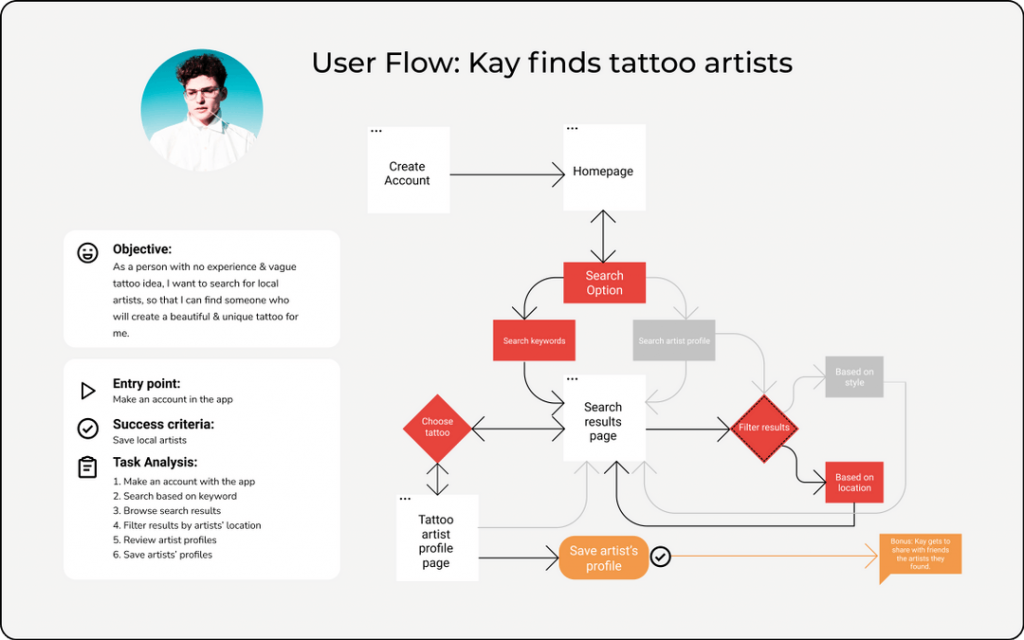
Develop
Wireframing:
From sketches to first clickable prototype.
I set out to map out their User flows. This step helped me keep the design user-centered, by showing me what pages or screens of the app will be needed from the perspective of my user personas.
Deliver
Learnings & Challenges
A design is never finished: The next steps.
I set out to map out their User flows. This step helped me keep the design user-centered, by showing me what pages or screens of the app will be needed from the perspective of my user personas.
Retrospective: What I’ve learned.
I set out to map out their User flows. This step helped me keep the design user-centered, by showing me what pages or screens of the app will be needed from the perspective of my user personas.